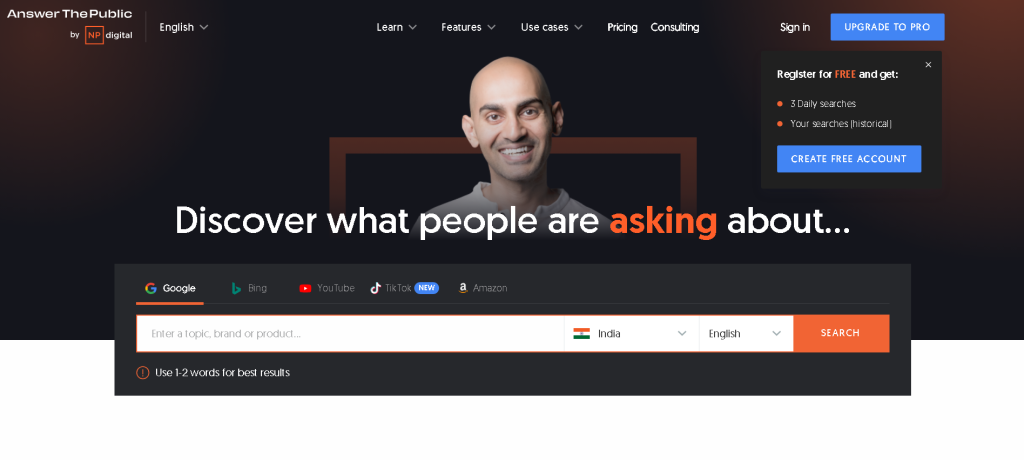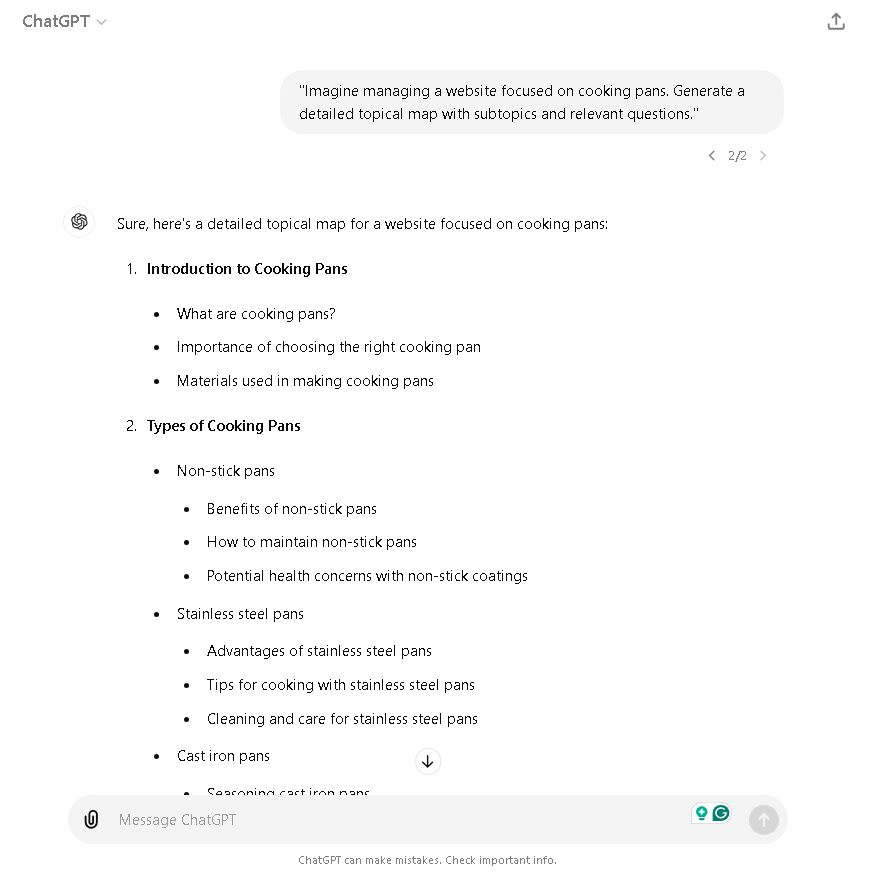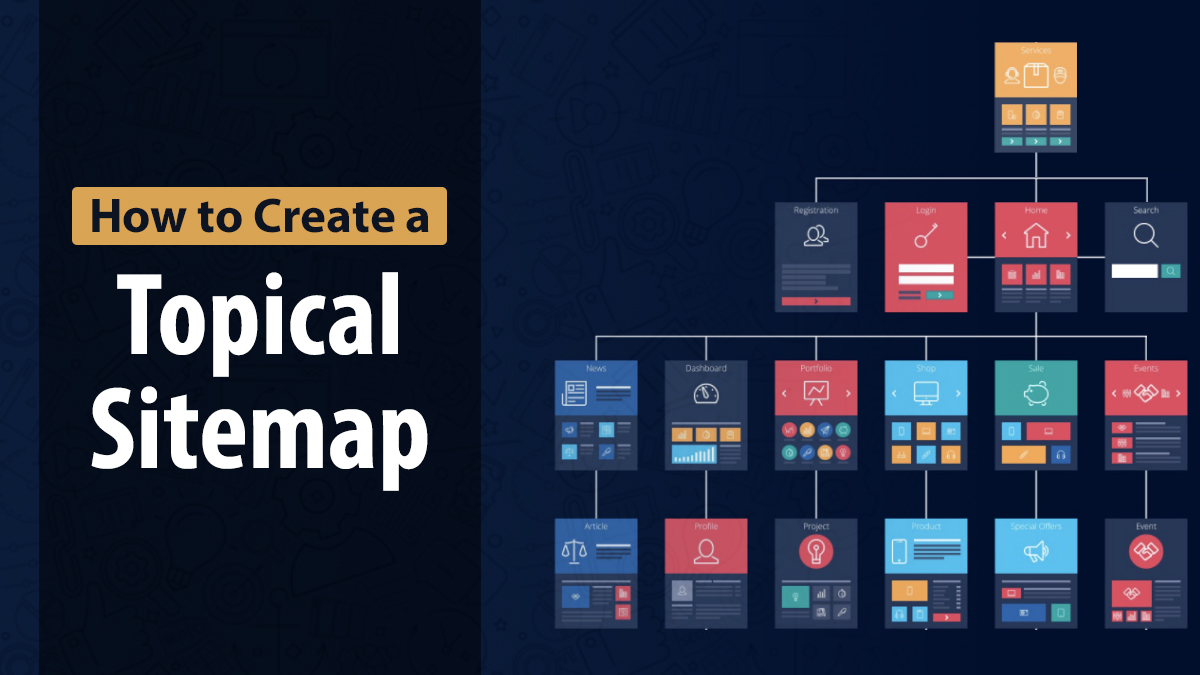In the fast-paced realm of SEO, staying competitive hinges on adopting innovative strategies and utilizing cutting-edge tools. A crucial technique in this regard is mastering the creation of topical sitemaps. This detailed guide elucidates the step-by-step process of crafting a topical sitemap, emphasizing contemporary methodologies and the integration of AI tools like ChatGPT.
By comprehensively understanding and implementing these methods, you’ll refine your content strategy and bolster your SEO endeavors, leading to heightened visibility and improved search rankings. Whether you’re a seasoned marketer or a newcomer to SEO, mastering how to create topical sitemaps is essential for sustained success in today’s digital landscape.
Understanding Topical Maps
A topical map is a visual representation of how various pieces of content on a website are interconnected through a specific theme or keyword. It helps organize and structure your content, making it easier for search engines to understand your site’s relevance and authority on a given topic.
Expert SEO service providers use topical sitemaps to enhance site structure, making it easier for search engines to understand content relationships and themes.
The Concept Of A Topical Map
Consider this example: select the keyword “cooking pan.” Subtopics within a topical map for this keyword could encompass:
Types of cooking pans:
- Cast iron: Known for its durability and even heat distribution, cast iron pans are favored for their versatility in cooking various dishes.
- Stainless steel: Resilient and easy to maintain, stainless steel pans are commonly used in professional kitchens and households alike.
- Non-stick: Featuring a coating that prevents food from sticking, non-stick pans are ideal for low-fat cooking and easy cleanup.
Uses of cooking pans:
- Baking: Pans suitable for baking can range from cake pans to muffin tins, each designed to achieve optimal results for specific baked goods.
- Frying: Whether it’s shallow frying or deep frying, different types of pans are utilized to achieve the desired crispiness and texture in fried foods.
- Sautéing: Sauté pans with sloped sides facilitate quick and even cooking of ingredients, commonly used in preparing stir-fries and sautéed vegetables.
Maintenance of cooking pans:
- Seasoning: Cast iron pans require regular seasoning to maintain their non-stick properties and prevent rusting, involving the application of oil and heat.
- Cleaning: Proper cleaning methods vary depending on the material of the pan, with some requiring gentle hand washing and others being dishwasher-safe.
- Recycling: When cooking pans reach the end of their lifespan, recycling options such as metal recycling programs can help minimize environmental impact by repurposing the materials.
Through thorough exploration of each subtopic, we achieve a comprehensive understanding of the intricacies related to selecting, using, and maintaining cooking pans, which contributes to a well-rounded knowledge base on the subject.
Step-By-Step Guide To Creating A Topical Map
Choosing Your Keyword
Start by selecting a keyword relevant to your niche. For this example, we’ll use “cooking pan.” The keyword should resonate with your target audience and align with your business goals.
Using AnswerThePublic

AnswerThePublic is a tool that generates questions and phrases related to your keyword based on actual user queries. Here’s how to use it:
- Visit AnswerThePublic and enter your keyword (e.g., “cooking pan”). Navigate to the AnswerThePublic website and type your chosen keyword into the search bar.
- Select your target audience’s country for more relevant results. Choose the country where your target audience is located to ensure the generated questions and phrases are tailored to that region.
- Click the search button to generate questions and phrases. Press the search button and wait for the tool to process the keyword and display a list of related questions and phrases.
Example output for “cooking pan” includes:
- Why do new pans need to be seasoned?
- Can cooking pans be recycled?
- Can cooking pans go into the dishwasher?
These questions can help build your topical map. Use them as a foundation to create content that addresses common user queries and enhances your keyword strategy.
Structuring Your Topical Map
Once you have a list of questions and subtopics, it’s time to organize them into a coherent structure. Here’s a simple way to do it:
Main Topic: Cooking Pan
- Types of Cooking Pans
- Cast Iron: Discuss the benefits of cast iron pans, such as heat retention and durability. Answer common questions like “How do you season a cast iron pan?” and “What are the best recipes for cast iron pans?”
- Stainless Steel: Highlight the advantages, like resistance to rust and versatility. Include questions like “Can stainless steel pans go in the dishwasher?” and “How to clean burnt food off stainless steel pans.”
- Non-Stick: Explain the benefits, such as ease of use and cleaning. Address questions like “Are non-stick pans safe?” and “How to restore non-stick coating.”
- Uses of Cooking Pans
- Baking: Explore the types of pans best for baking and provide recipes that require specific pans. Questions might include “Can you bake a cake in a frying pan?” and “Best pans for baking bread.”
- Frying: Discuss which pans are best for frying and why. Answer queries like “What pans are best for frying eggs?” and “How to prevent food from sticking while frying.”
- Sautéing: Explain the techniques and suitable pans for sautéing. Include “Can you sauté in a non-stick pan?” and “Best practices for sautéing vegetables.”
- Maintenance of Cooking Pans
- Seasoning: Provide a step-by-step guide on seasoning different types of pans. Answer questions like “Why do you need to season a pan?” and “How often should you season a cast iron pan?”
- Cleaning: Offer cleaning tips for various pan types, including what to avoid. Questions could include “How to clean burnt pans?” and “Can you use steel wool on stainless steel pans?”
- Recycling: Discuss environmentally friendly ways to dispose of old pans. Answer questions like “Are cooking pans recyclable?” and “Where to recycle old pans?”
Each subtopic can be expanded with the relevant questions and answers gathered from AnswerThePublic.
Also Read: 11 AnswerThePublic Alternatives Compared
- Enhancing With ChatGPT
To improve your topical map, leverage ChatGPT for generating additional content ideas and structuring them effectively. Follow these steps:
- Access ChatGPT Interface: Begin by accessing the ChatGPT interface and utilizing the prompt feature to outline your specific requirements.
- Provide Clear Context: Input a detailed and precise prompt. For instance, you could state, “Create a topical map tailored for a website dedicated to cooking pans.” Make sure to include all necessary details to guide the AI accurately.
- Review Generated Output: Evaluate ChatGPT’s comprehensive topical map. Assess its relevance and accuracy, then refine the suggestions to align with your content strategy.
- Incorporate Refined Ideas: Integrate the refined topical map into your overall content planning and development process. This ensures a cohesive and comprehensive content strategy.
Example Prompt:
“Imagine managing a website focused on cooking pans. Generate a detailed topical map with subtopics and relevant questions.”

- Integrating Your Topical Map
After completing your topical map, integrate it into your content strategy as follows:
- Blog Posts: Write individual blog posts for each subtopic and question identified in your topical map. Ensure that each post offers comprehensive information and addresses the specific query of the user. This approach creates valuable content tailored directly to your audience’s needs and interests.
- Website Sections: Organize your website content into sections that correspond with the categories and subtopics of your topical map. This structured approach improves the user experience by simplifying site navigation and helps search engines better understand the thematic relevance and hierarchy of your content.
- Internal Linking: Incorporate internal links within your website to connect related content pieces. By linking relevant pages or posts, you establish a network of connections that aids navigation for visitors and signals to search engines the semantic relationships between different parts of your site. This can positively impact your site’s SEO performance by enhancing crawlability and relevance.
- Detailed Implementation Strategy:
- Content Calendar: Develop a content creation schedule aligned with your topical map. Adhering to a calendar reflecting the themes and subtopics outlined in your map ensures consistent publishing and comprehensive coverage of each subject area over time. This approach maintains momentum in your content strategy and provides a steady flow of valuable information to your audience.
- On-Page SEO: Optimize all content with relevant keywords, meta descriptions, and headers. Incorporating targeted keywords and descriptive metadata enhances search engines’ content discoverability, driving more organic traffic to your site. Clear and structured headers aid both users and search engine crawlers in understanding the hierarchical organization of your content.
- User Engagement: Encourage interaction and engagement with your audience by incorporating features such as comment sections, surveys, and tailored call-to-action prompts for each topic. Stimulating user participation in discussions or feedback provision enhances their experience and increases time spent on your site. This heightened engagement fosters a more robust community around your brand and contributes to improved retention and loyalty.
Benefits Of Using A Topical Map
Improved SEO
A well-structured topical map helps search engines recognize the relevance and depth of your content, resulting in higher rankings and increased visibility. By thoroughly covering a topic, you show search engines that your site has authoritative knowledge on the subject.
This comprehensive approach not only helps search engines understand the breadth of your content but also signals that your site provides valuable and reliable information, enhancing its credibility and prominence in search results.
Enhanced User Experience
Organizing content logically is essential for users to efficiently find the information they need. This approach enhances user engagement by reducing the effort required to navigate the site.
It also lowers bounce rates, showing that users are finding what they need instead of leaving out of frustration. When users can easily navigate and access relevant information, they tend to spend more time on the site. This positive experience also increases the likelihood of their return, contributing to sustained user retention and satisfaction.
Content Gaps Identification
A topical map helps identify content gaps, allowing you to address those gaps and enhance the comprehensiveness of your resource for your audience. By using this tool, you can ensure that your website covers all aspects of a given topic thoroughly, leaving no part unexplored or overlooked.
Efficient Content Creation
A clear map significantly enhances the efficiency of your content creation process. It provides precise guidance on the topics to cover and their interconnections, saving time and effort. This structured approach ensures a consistent output of high-quality content. By understanding what needs to be addressed and how it fits into the broader context, you can streamline your workflow and achieve better results with greater ease and reliability.
Competitive Advantage
Using a topical map helps your website stay ahead of competitors with a structured approach. This framework enhances visitor attraction and maintains their engagement. As a result, the chances of converting visitors into customers significantly increase. This strategy not only improves the overall user experience but also strengthens your online presence in the market.
Bonus: Quick Topical Maps With AI
Creating a topical map efficiently involves leveraging tools beyond traditional methods like Answer the Public and manual structuring. AI tools such as ChatGPT offer a faster alternative by generating detailed outlines and content ideas. This expedites the process and helps in crafting a comprehensive topical map in a matter of seconds.
To create a topical map using ChatGPT, you can follow these steps:
- Define Your Niche: Begin by clearly defining the niche or main topic for your website. This step is crucial as it sets the foundation for the topical map and ensures that the generated content is aligned with your website’s focus.
- Generate Prompt: Provide ChatGPT with a detailed prompt that outlines your requirements and expectations. This prompt serves as instructions for ChatGPT to understand the context and generate relevant content ideas accordingly.
- Review and Edit: Once ChatGPT generates the topical map, review the output carefully to ensure its accuracy and relevance. You may need to make necessary adjustments or edits to tailor the content to fit your specific content strategy and audience preferences.
- Implement: Utilize the generated topical map to guide your content creation and organization process. The map can serve as a roadmap, helping you prioritize topics, structure your content, and ensure consistency across your website.
By following these steps and leveraging ChatGPT’s capabilities, you can streamline the creation of a topical map for your website, saving time and effort while maintaining quality and relevance in your content strategy.
The AI-generated topical map provides a comprehensive overview of sustainable cooking practices, encompassing several vital elements.
Also Read: How to Use ChatGPT for SEO Strategy – A Beginner’s Guide
Example AI-Generated Topical Map
Under the main topic of Sustainable Cooking Practices, the map outlines specific areas to consider:
Eco-Friendly Cooking Tools:
- Bamboo Utensils: Using utensils made from sustainable bamboo material.
- Reusable Baking Mats: Choosing baking mats that can be washed and reused, reducing reliance on disposable options.
Energy-Efficient Cooking Methods:
- Induction Cooking: Adopting induction cooktops, known for their energy efficiency compared to traditional gas or electric stoves.
- Solar Ovens: Utilizing solar energy for cooking purposes, promoting sustainability and reducing dependence on conventional energy sources.
Reducing Food Waste:
- Composting: Implementing composting practices to diminish the amount of organic waste sent to landfills and instead utilizing it to enrich soil.
- Creative Leftover Recipes: Innovating in the kitchen by transforming leftover ingredients into new dishes, minimizing food waste and maximizing utilization.
This structured approach not only underscores the significance of sustainable cooking practices but also offers practical solutions to incorporate them into daily life.
Conclusion
Learning how to create topical sitemap is pivotal for effective SEO strategies. Leveraging tools such as Answer the Public and AI technologies like ChatGPT streamlines the process of generating comprehensive and structured content plans. Incorporating these strategies not only enhances your site’s SEO performance but also improves the user experience. Start implementing how to create topical sitemap today and witness a significant rise in your search engine rankings.
FAQs
How do Topical Maps differ from traditional sitemaps?
While traditional sitemaps focus on organizing URLs and page hierarchy, Topical Maps delve deeper into the thematic structure of content. They highlight relationships between topics, subtopics, and content clusters, offering a more comprehensive view for search engines.
What are the key components of a Topical Map?
Topical Map typically includes main topics, subtopics, and their interconnections. It may also incorporate keyword research data, content clusters, and internal linking strategies to reinforce topical relevance across the website.
How can I create a Topical Map for my website?
Creating a Topical Map involves several steps, including conducting keyword research to identify relevant topics, categorizing content into thematic clusters, mapping out connections between topics, and optimizing internal linking structures. Various tools and methodologies can assist in this process, such as content auditing software and mind mapping tools.
How do Topical Maps influence user experience (UX)?
Topical Maps contribute to a better user experience by helping visitors navigate the website more efficiently and find relevant content easily. They enable intuitive exploration of related topics, fostering engagement and longer session durations.
Are there any best practices for optimizing Topical Maps?
Optimizing Topical Maps involves ensuring clear topic hierarchies, minimizing duplicate content, and strategically linking related topics. It’s also essential to keep the Topical Map updated as new content is created or existing content evolves.
Are there any SEO tools specifically designed for Topical Mapping?
While there are no dedicated tools exclusively for Topical Mapping, many SEO platforms offer features for content organization, keyword clustering, and semantic analysis, which can aid in creating and optimizing Topical Maps.
























